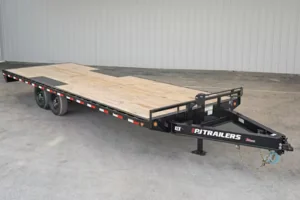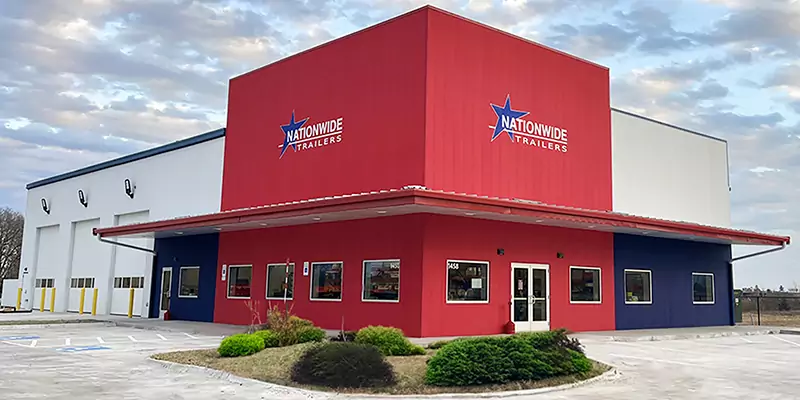Trailer Towing Guide: An Easy Guide to Towing Your Trailer Safely
We love convenience. It’s just easier when you need to get things done and have the right tools to do it. Sometimes, we need a little help to get those tools to work for us and not against us. Whether you need to transport goods from point A to point B or you’re planning a trip with your family and need to cart your extra baggage, a trailer does the job. This trailer towing guide will help you get through the nitty-gritty of towing basics so you can rest easy knowing you’re safe when you hit the road.
Know the Weight Rating of Your Vehicle and Trailer
Size definitely matters. Before you consider getting a trailer or learn how to tow one, your vehicle must have the capacity to tow the amount of weight your trailer can hold. Each vehicle and trailer has a specific capacity for towing. You have to meet these requirements to avoid any issues along the way. The trailer you choose will depend on what you need it for, too. Let’s say you want to transport heavy equipment or tools or you need to haul your friend’s car over a longer distance. There’s a trailer for every form of transit that has its own weight and mass requirements.
Calculate the Towing Capacity
A simple calculation will give you an estimate of your total towing capacity:
- Gross Vehicle Weight + Gross Trailer Weight = Gross Combination Weight
- Gross Combination Weight – Curb Weight of Towing Vehicle = Total Towing Capacity
Keep in mind that the curb weight includes your towing vehicle’s tank capacity and other items on board at the time of towing and excludes any passengers. It might seem unnecessary to go to extra lengths to know this, but you should always keep safety in mind. As the saying goes, “Rather safe than sorry.” You also save on fuel and vehicle wear and tear in the long run when you take the right weight precautions.
Choose a Suitable Hitch
Once you’ve found the right trailer or you already have one, you need a suitable hitch. A hitch is the connection that keeps your trailer attached to your vehicle — without it, you won’t be able to tow. Depending on your trailer and what it’s used for, as well as the weight of your vehicle, there are varieties of hitches to suit your towing needs. If you’re unsure which one is right for you, shop around, and you’ll be sure to find one.
Hook up Your Trailer
You’ll need someone to help you hook up your trailer. It’s easier that way. This person will either be the one who moves the vehicle or guides the driver and hooks up the trailer. Safety is always a priority, so communicate with each other at all times to ensure there are no accidents in the process. Then, follow these steps:
- Before you do anything at all, check your vehicle and trailer tires. The last thing you need is a flat tire while driving.
- Grease your trailer ball to avoid the friction caused by the weight of the trailer bearing down. This helps extend the ball’s life.
- Once your vehicle and trailer are aligned, check that your ball and coupler match when you hook your trailer. So if your coupler is 2 inches, your ball should be, too.
- The coupler must be higher than the ball height when you’re hooking them up. To secure the hitch, tighten the latch pin or coupler lock.
- Safety chains are required and offer additional security once you’ve hooked up the trailer. Tie them underneath the coupler. It serves as protection if the ball and coupler disconnect at any point while you’re driving.
- If you’ve used a trailer jack, now is the time to get it out of the way. It usually retracts into the trailer.
- Attach your trailer wiring to your vehicle to make sure your lights function.
- Have your friend stand behind the trailer to check that all your lights work, including your hazards and brake lights.
Hit the Road, Jack
Now that you’ve hooked your vehicle and trailer, it’s time to hit the road — not the car in front of you.
Make sure there’s at least a vehicle-sized space between yours and the one in front or follow the four-second rule when you’re towing a trailer. This is a precaution in case you have to brake suddenly — like if the idiot a few cars ahead swerves to avoid a bird in the road. If you’re hauling something especially heavy, giving yourself ample space and time to brake is key.
Keep Your Eyes Open
Literally, yes. Be alert and aware of your surroundings. When you’re towing your trailer, you need to remember that your reaction time directly impacts your vehicle, trailer and surrounding cars. Consider these factors:
- Manage your speed.
- Constantly check that your trailer is still attached.
- Be aware of traffic.
- Be mindful of reckless drivers.
- Take note of the weather conditions.
Being vigilant is a key factor in ensuring you reach your destination safely.
Changing Lanes
Some things are out of your control, like speeding cars passing you by, driving up and downhill, and unexpected wind surges. You might feel your trailer swaying gently or even wildly if you experience any of these. Be extra careful when you change lanes to reduce the swaying as much as possible. You could risk your trailer hitting a car or disconnecting entirely if it sways uncontrollably, so it’s best to drive slowly if you can. Here are more tips for safely changing lanes when hauling a trailer:
- Signal in advance.
- Pass on level ground rather than steep downgrades or upgrades.
- Give yourself adequate clearance before merging ahead of another car.
- Ease over into the other lane.
Practice Patience
If there’s one thing towing a trailer as a beginner or experienced driver teaches you, it’s patience. Since speeding is out of the question, you’ll find most cars trying to overtake you because of their own impatience. As annoying as it gets, don’t panic and avoid eye contact. Some drivers may give you a disapproving look when they pass you — ignore them. It’s your journey. Enjoy the ride.
Stop Slowly
Any time you need to pull over — whether you’ve reached your destination or just need a restroom break — be sure to approach the location by braking sooner and slower than you would if you weren’t towing. Whether you’re using a brake controller or your trailer is fitted with surge brakes, practice the same caution when coming to a stop.
Park Smartly
Find a parking spot that’s isolated so you can come out of it easily. If you’re making a pit stop, park along the side of the road if it’s allowed and walk over. Unless you’re a really skilled driver who can maneuver their way through awkward spaces with a trailer in tow. Kudos to you. As long as you reach your final destination in one piece, we’re happy.
Get in Touch With Nationwide Trailers
Now that you’re equipped with the basics of towing a trailer, feel free to reach out to us for any trailer needs you might have. Nationwide Trailers is the largest PJ Trailers dealer in the U.S. We have multiple locations, a large inventory of different trailers, parts for every model, rental options, service plans and so much more. Get in touch with us through our website or call us, and one of our professional, dedicated team members will help you find the right trailer for your personal or business needs.





